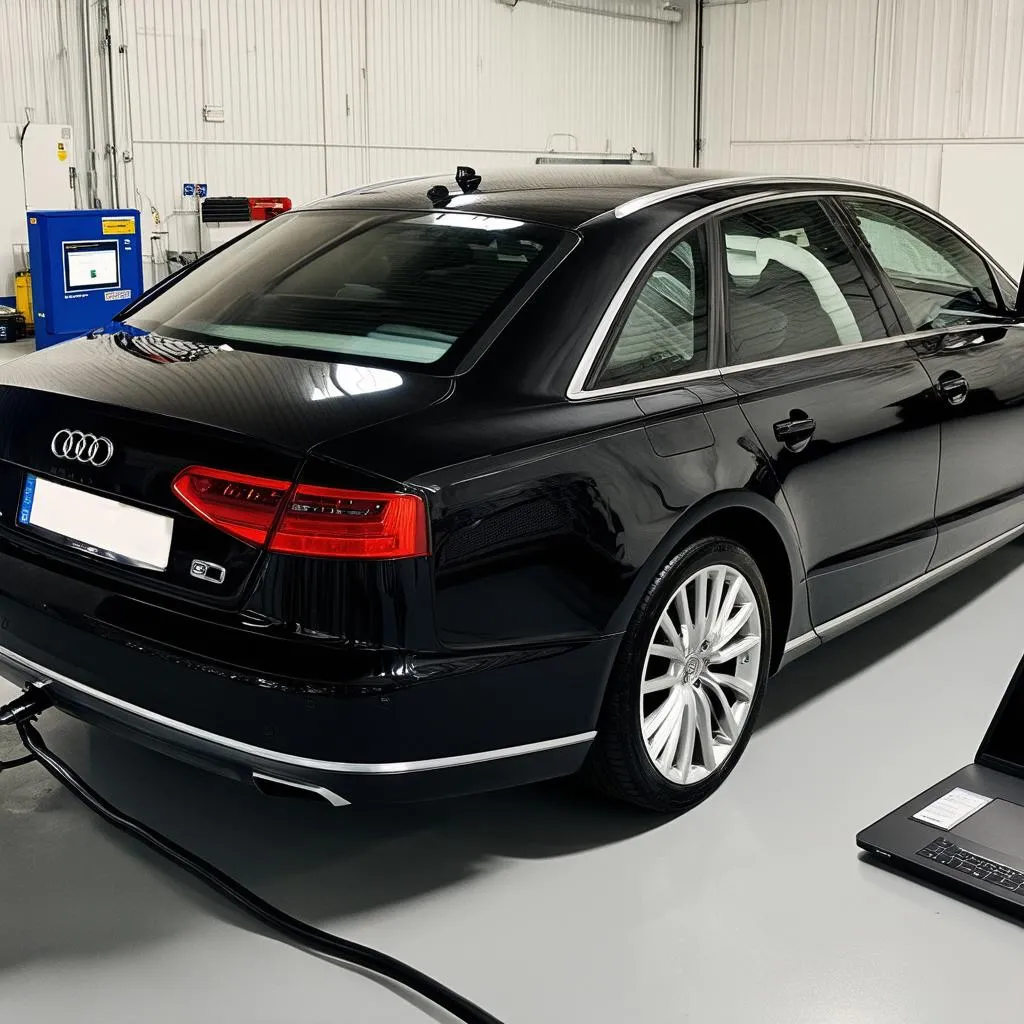The VCDS (VAG-COM Diagnostic System) fan test is a crucial diagnostic procedure for identifying cooling fan issues in Volkswagen, Audi, Seat, and Skoda vehicles. Understanding how to perform and interpret this test can save you time and money, whether you’re a seasoned technician or a car owner looking to troubleshoot problems.
Why is the VCDS Fan Test Important?
A malfunctioning cooling fan can lead to overheating, which can cause significant engine damage. The VCDS fan test allows you to pinpoint the source of the problem, whether it’s a faulty fan motor, a blown fuse, a wiring issue, or a problem with the fan control module. This precise diagnosis helps you avoid unnecessary repairs and get your car back on the road quickly. Similar to vcds cooling fan test, other diagnostic procedures can also provide valuable insights into your vehicle’s health.
How to Perform a VCDS Fan Test
Performing a VCDS fan test is a straightforward process, but it’s important to follow the correct steps:
- Connect your VCDS interface to your vehicle’s OBD-II port.
- Turn the ignition on, but do not start the engine.
- Open the VCDS software on your computer.
- Select “Select Control Module.”
- Choose “Engine” (or the appropriate module for your vehicle).
- Select “Output Tests.”
- Locate the cooling fan test within the available output tests. The specific naming might vary depending on the vehicle model and year.
- Follow the on-screen prompts to activate the fan at different speeds.
Interpreting the Results
Observing the fan behavior during the test is crucial for accurate diagnosis:
- Fan runs at all speeds: This indicates that the fan motor, wiring, and control module are likely functioning correctly.
- Fan doesn’t run at any speed: This suggests a potential issue with the fan motor, wiring, fuse, or fan control module. Further testing is required to isolate the specific component.
- Fan only runs at certain speeds: This could point to a problem with the fan control module or the wiring to the fan.
Common VCDS Fan Test FAQs
What if my fan doesn’t turn on at all during the test?
If the fan doesn’t activate, start by checking the fan’s fuse. A blown fuse is a common cause of fan failure. If the fuse is intact, you’ll need to investigate the wiring, fan motor, and fan control module for potential issues. Tools like the VCDS can be incredibly helpful for pinpointing the problem, similar to how we use vcds vw for various Volkswagen diagnostics.
Can I damage my car by performing a VCDS fan test?
No, the VCDS fan test is a safe procedure that won’t damage your car when performed correctly.
What if I’m not comfortable performing the test myself?
If you’re unsure about any step, it’s best to consult a qualified automotive technician.
Beyond the Fan Test: Other VCDS Capabilities
The VCDS is a powerful diagnostic tool that goes beyond just testing cooling fans. You can use it to read and clear fault codes, access live data streams, perform adaptations, and much more. Understanding what can vcds do can empower you to take control of your vehicle’s maintenance. For instance, if you’re looking to customize the ambient lighting in your VW, you might find resources on 2021 vw gli vcds ambient lighting helpful.
Conclusion
The VCDS fan test is a valuable tool for diagnosing cooling fan problems. By understanding the process and how to interpret the results, you can quickly identify the root cause of overheating issues and take the necessary steps to fix them. Whether you own a Volkswagen Taos and need specific information on vcds taos or another VAG vehicle, mastering the VCDS fan test is a crucial skill for any DIY enthusiast or professional technician. Regularly performing this test can prevent costly repairs and ensure your vehicle’s cooling system remains in top condition.
FAQ
- How often should I perform a VCDS fan test?
- Are there any safety precautions I should take before performing the test?
- What are the most common causes of cooling fan failure?
- Can I use the VCDS to test other components of the cooling system?
- Where can I find more information about using VCDS for diagnostics?
- What are the symptoms of a faulty cooling fan?
- How much does a VCDS system cost?
For further assistance, contact us via Whatsapp: +1 (641) 206-8880, Email: CARDIAGTECH[email protected] or visit us at 276 Reock St, City of Orange, NJ 07050, United States. Our customer support team is available 24/7.

